
A wind turbine produces clean power, but often, the processes used to build and take apart that wind turbine are decidedly dirty. With heavy industrial processes required to manufacture wind turbines, and many consigned to landfill at the end of their lives, there are serious questions about the sustainable credentials of not wind power as a whole, but the means by which wind power is produced.
In response, groups from original equipment manufacturers to university researchers have been looking for a way to clean up this process, and have settled on a solution: recyclable turbine blades made of resin. The new technology has potential, but with many operating wind turbines made of unrecyclable legacy materials, questions remain as to how effective this transition will be.
Elsewhere, we speak to Divert about how it aims to tackle the separate, but combined, issues of food waste and climate change, and ask what the future of the Nigerian power industry could look like.
Whether you are on a desktop, tablet, or smartphone, you can read the magazine for free online, and join the conversation on Twitter.
In this issue
Cover Story
How building a circular industry could change the future of wind turbine recycling

US Tariffs are shifting - will you react or anticipate?
Don’t let policy changes catch you off guard. Stay proactive with real-time data and expert analysis.
By GlobalDataWind power is sustainable, but disposing of wind turbine blades is not. Annabel Cossins-Smith investigates new ways to make wind power truly circular.
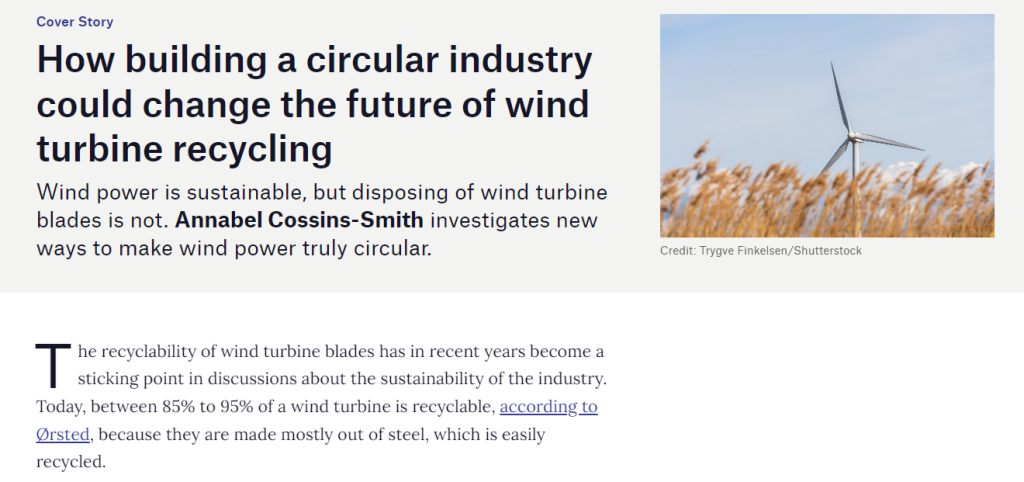
“The largest con in corporate history”: how allegations mounted against the Adani Group
Accusations of stock manipulation from Hindenburg have caused the shares of the Adani Group to collapse. Smruthi Nadig charts the process of the allegations.
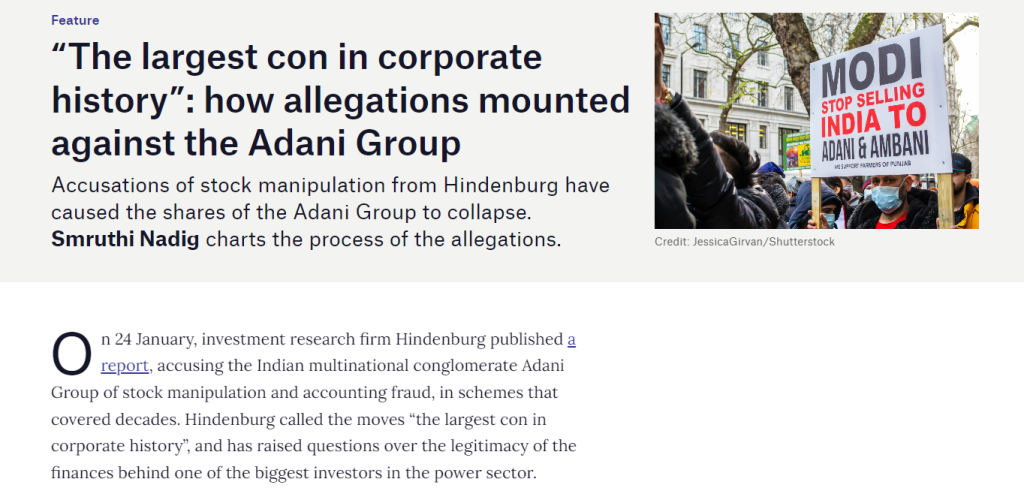
“The world needs to embrace a suite of solutions”: Divert on food waste and climate change
Kit Million Ross hears from Divert CEO Ryan Begin about an innovative solution to the twin crises of food waste and climate change.
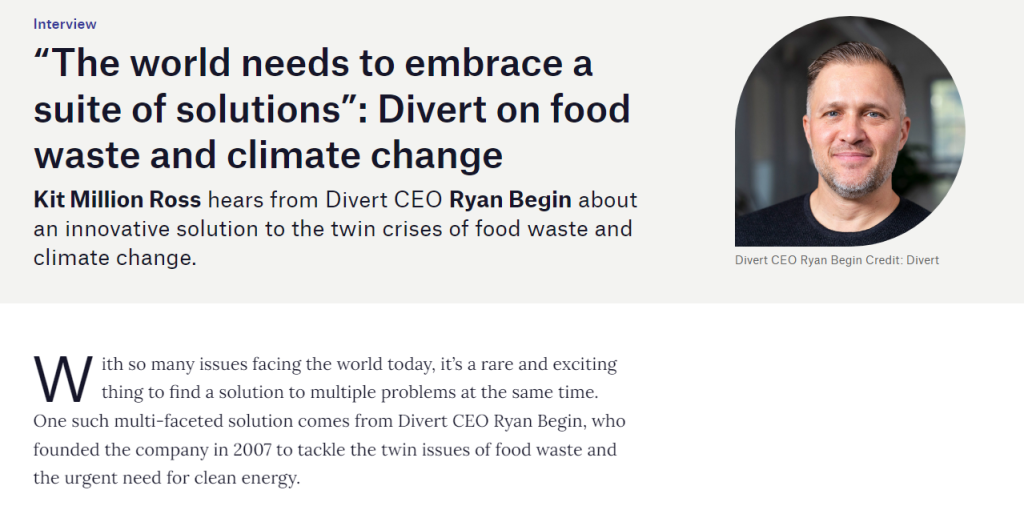
High promise, high potential: the future of Nigerian renewables
Power generation remains one of the biggest barrier for Nigerian households. Smruthi Nadig investigates how almost half of the country’s power needs could be met by 2030.
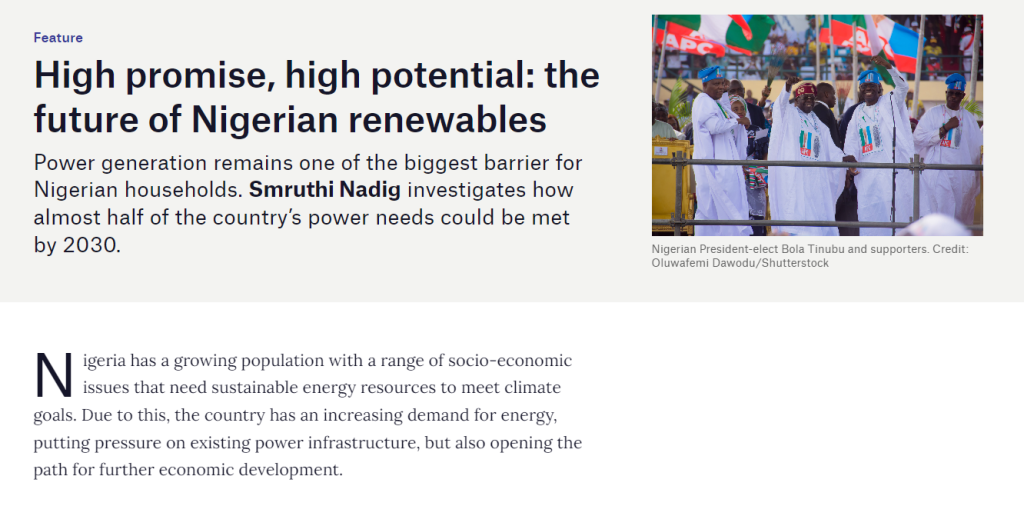
Seize the means of generation: inside distributed power
As legacy power infrastructure struggles, decentralised power could be the long-term solution. Nnamdi Anyadike investigates the process.
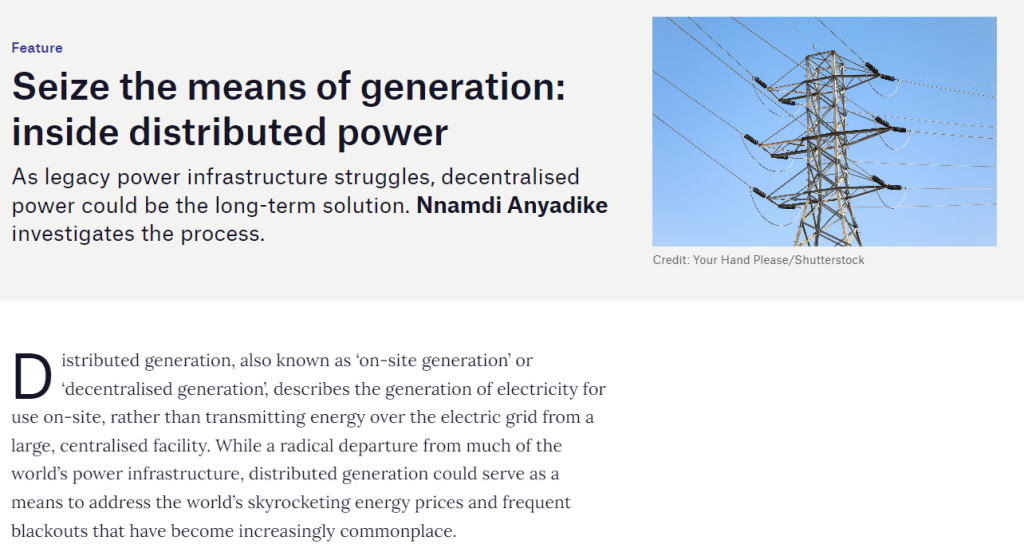
Nuclear-powered cloud: is the industry ready for nuclear investment?
A new cloud computing facility in the US will be powered by nuclear. Elliot Gardner asks if this could be a proving ground for nuclear investment.
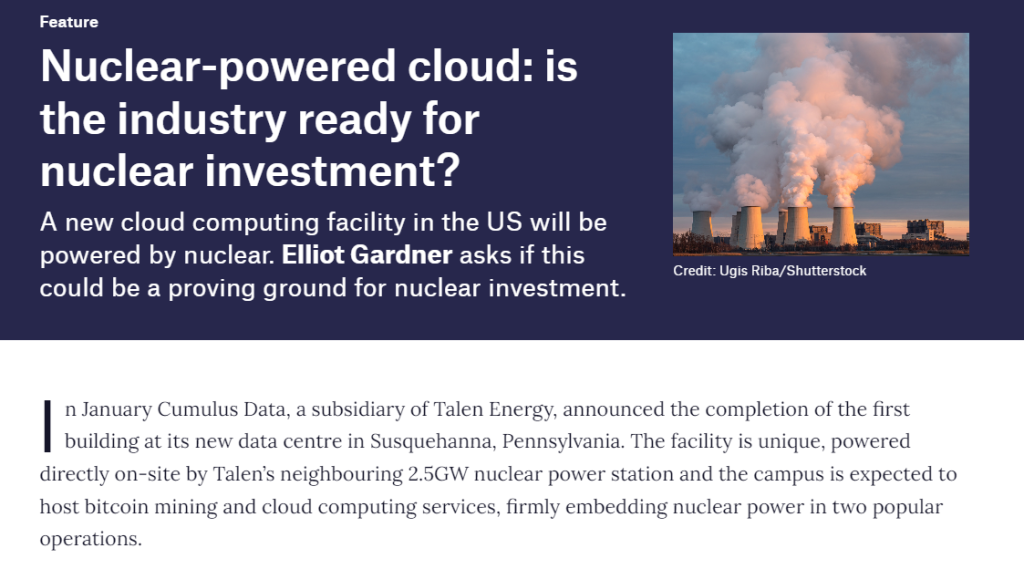
Next issue: transmission and distribution
Power generation facilities are never built in a vacuum; a wind turbine that spins but does not distribute power is of little use to anyone. Incorporating power infrastructure, especially technologies such as renewables, which are scaling up at a rate never before seen, brings a range of logistical challenges, turning the process of improving transmission and distribution from one of technology to one of administration. Next month, we’ll investigate these challenges, and consider how power can be best distributed.



